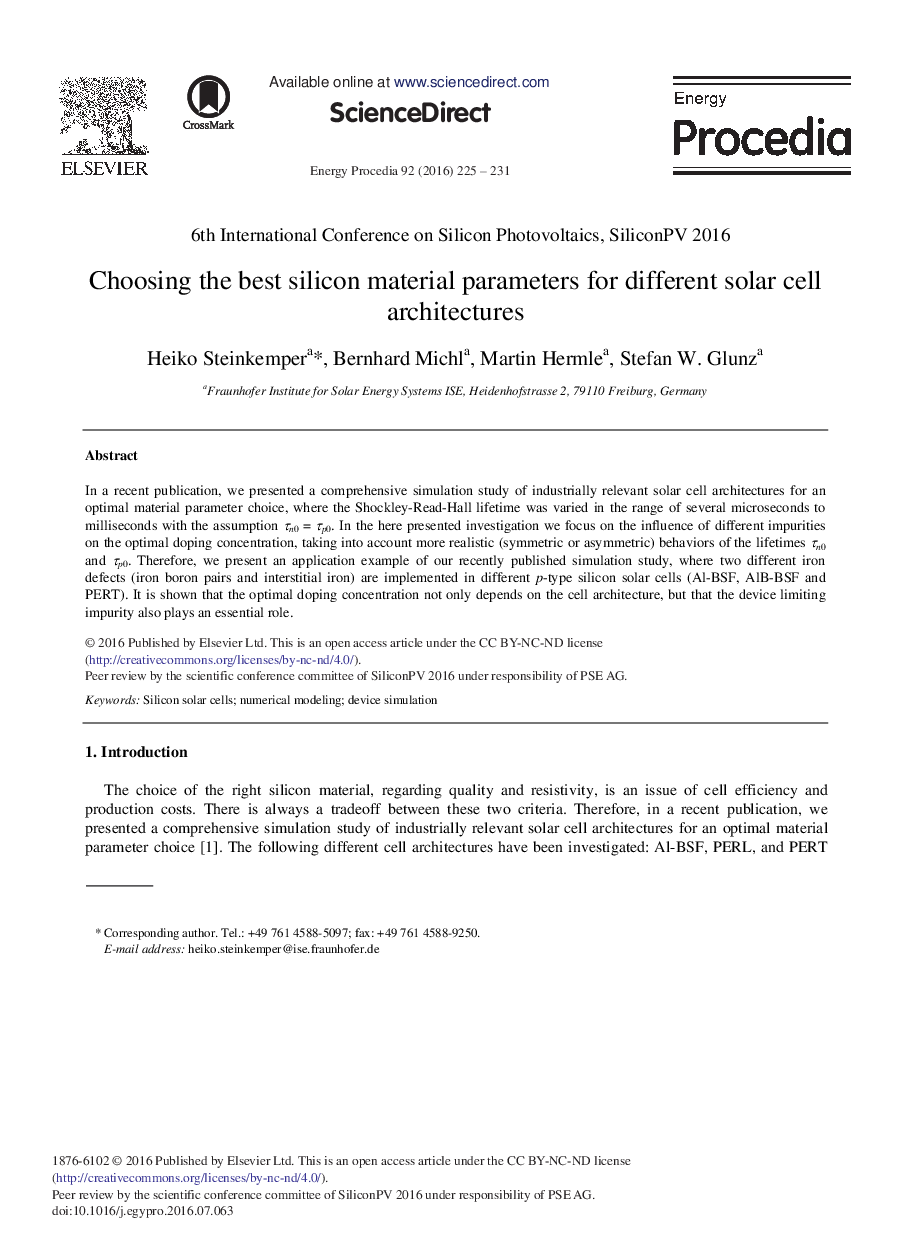| Article ID | Journal | Published Year | Pages | File Type |
|---|---|---|---|---|
| 5446581 | Energy Procedia | 2016 | 7 Pages |
Abstract
In a recent publication, we presented a comprehensive simulation study of industrially relevant solar cell architectures for an optimal material parameter choice, where the Shockley-Read-Hall lifetime was varied in the range of several microseconds to milliseconds with the assumption Ïn0 = Ïp0. In the here presented investigation we focus on the influence of different impurities on the optimal doping concentration, taking into account more realistic (symmetric or asymmetric) behaviors of the lifetimes Ïn0 and Ïp0. Therefore, we present an application example of our recently published simulation study, where two different iron defects (iron boron pairs and interstitial iron) are implemented in different p-type silicon solar cells (Al-BSF, AlB-BSF and PERT). It is shown that the optimal doping concentration not only depends on the cell architecture, but that the device limiting impurity also plays an essential role.
Related Topics
Physical Sciences and Engineering
Energy
Energy (General)
Authors
Heiko Steinkemper, Bernhard Michl, Martin Hermle, Stefan W. Glunz,
